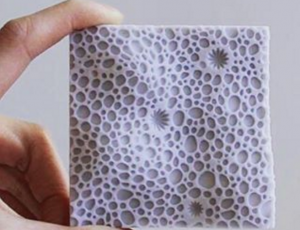The grandson of Jacques-Yves Cousteau followed the passion of his grandfather and got involved in research and rescue of the ocean biome. His team planted the first artificial skeletons of corals to help coral polyps to form new colonies.
The World Wildlife Fund estimates that a quarter of the whole world’s coral reefs are damaged without a chance for restoration, and two thirds of them are seriously threatened. Fortunately, Cousteau’s grandson can promote the restoration of the oceans with the achievements that his grandfather could not even dream about.
Inspired by modern advanced technologies in 3D printing, Fabien Cousteau and a team of researchers from the Oceanic Learning Center called on his behalf decided to experiment with the printing of coral reefs. This winter, a team of divers installed the first artificial reef on the ocean’s floor near the island of Bonaire, located in the Caribbean archipelago next to Venezuela. The island and the surrounding area have a relatively healthy and well-protected ecosystem, which makes it an excellent ground for testing.

In natural conditions, the calcareous “skeleton” of calcium carbonate is formed due to the death of many small polyps. Their descendants are immovably fixed on a common skeleton for the entire colony, giving it a coloration. Coral polyps feed on plankton, but some species can catch small fry, stretching and spreading tentacles at night. Cousteau wants to print as many skeletons as possible to make it easier for polyps to multiply and attract the natural fauna – fish, octopus and other animals that use coral thickets like a house and hunting grounds.
The skeleton of artificial corals is made of the same material as the natural ones – from CaCO3. Using it for 3D printing has become possible only in the last few years. Since then, researchers have developed three different textures and received more than 30 different forms of corals, which visually reproduce the shape of a natural reef. These structures are attached to the ocean’s floor using trays or directly integrated into existing colonies.
After successful laboratory tests, Cousteau hopes that by the beginning of the spring of next year, the corals in the waters of Bonaire will thrive and expand. Of course, this does not solve all the problems caused by global warming: in the natural environment, the corals will continue to die, but the idea itself can become a very effective measure for conserving biological diversity in future.
How useful was this post?
Click on a star to rate it!
Average rating 5 / 5. Vote count: 1